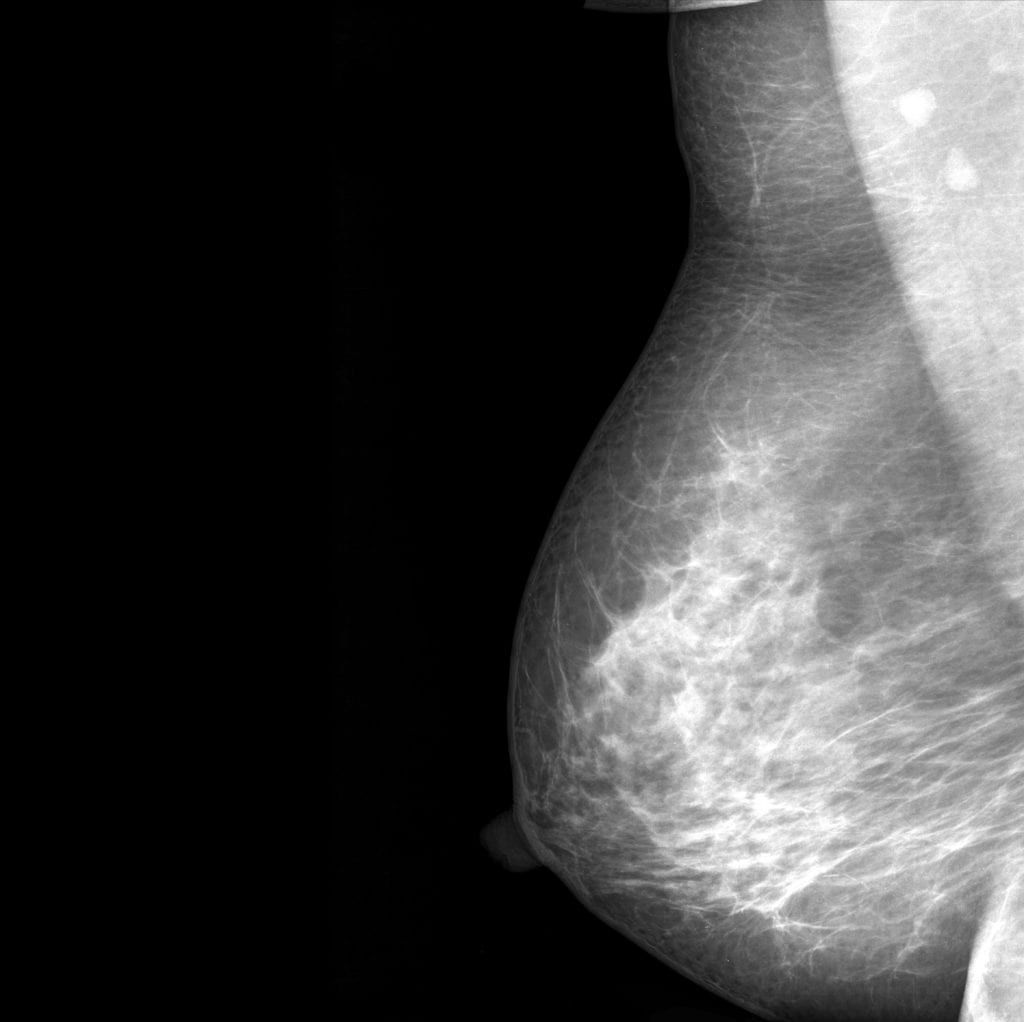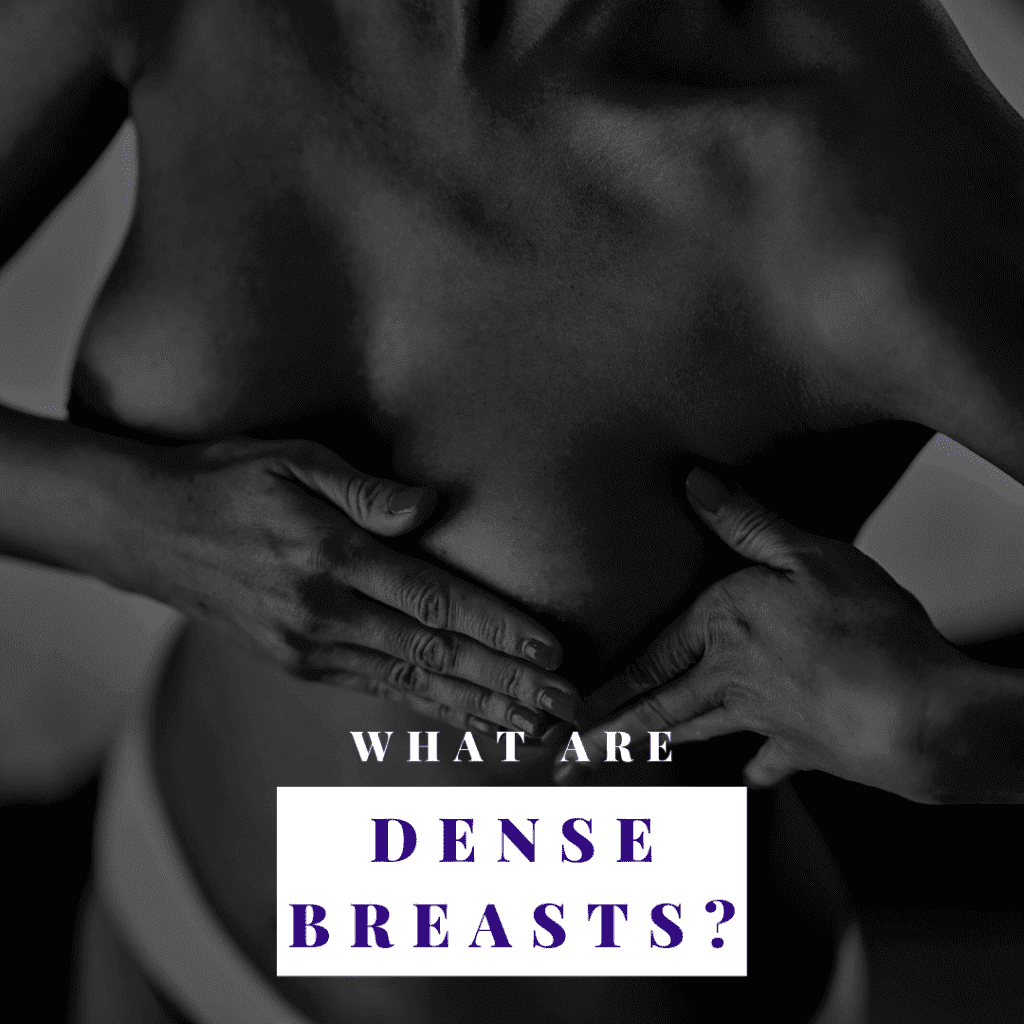We all know that breasts come in a variety of shapes and sizes, but did you know that breasts can also vary in density? When it comes to breasts, density is not determined by size or firmness, rather it is determined by the ratio of fibroglandular tissue(lobules, ducts, and connective tissue) and fat in the breasts. Therefore, women whose breasts contain more than 50% fibroglandular tissue are said to be dense.
Because breast density is not determined based on size or firmness, it can only be determined during a mammogram. On a mammogram, dense breast tissue will simply look like a solid white area that can be difficult to see through. Radiologists who perform mammograms will use something known as the Breast Imaging Reporting and Data System (BI-RADS) in order to classify breast density. This system breaks down breast density into four categories, including:
A- Almost Entirely Fatty

Breasts that are categorized as type A are mainly composed of fatty tissue. Generally speaking, this means that they contain less than 25% of fibroglandular tissue. Only around 10% of women have type A breasts.
B- Scattered Areas of Fibroglandular Density
Breasts categorized as type B are also mostly composed of fat, however they also contain scattered areas of fibroglandular tissue that adds to the density of their breasts. Generally speaking, this means that their breasts contain about 25-50% fibroglandular tissue. About 40% of women have type B breasts.
C- Heterogeneously Dense
Breasts categorized as type C are composed primarily of fibroglandular tissue. In fact, they generally contain about 51-75% fibroglandular tissue. About 40% of women have type C breasts.
D- Extremely Dense
Breasts categorized as type D are almost entirely composed of fibroglandular tissue. In fact, they are composed of 75% or more fibroglandular tissue. Only about 10% of women have type D breasts.
As you can see, the majority of women tend to fall in the middle of the scale, meaning that most women have breasts composed of dense tissues. While scientists are not exactly sure why this happens, there are a few theories that can explain why some women have more dense breasts than others. One of the first theories is that age causes breast density to break down, especially after menopause. Along with age, it is also believed that hormones and body weight play a role in breast density as well. In fact, women taking hormone replacement therapy have been found to have an increase in breast density. Finally, women with lower body weights are more likely to have more dense breasts since they have a lower amount of fat overall.

It is important to note that having dense breasts may put you at an increased risk of developing breast cancer, and the denser your breasts, the higher this risk. In fact, dense breasts are a risk factor that is not well known by most women. In some cases, dense breasts can also be mistaken for a mass or a tumor, especially since all of these things cause a white shape on the mammogram. Unfortunately, mammograms also tend to be less accurate in women with dense breasts and 1 in screening mammograms will miss a breast cancer diagnosis.
Because of this, your doctor may perform a mammogram, as well as additional supplemental imaging to make sure your breasts are healthy. Other supplemental imaging techniques include an ultrasound, MRI, contrast enhanced mammography (CEM), and molecular breast imaging (MBI). It may also be helpful to request a 3D mammogram, since they can obtain a variety of clearer images from multiple angles. In fact, 3D mammograms are quickly becoming more popular.

Dr. Geoffrey Zann is a Certified Robotic Da Vinci Surgeon, Board-certified by the American College of Obstetricians and Gynecologists, and a Diplomat of the American Board Obstetrics of Gynecology. He has been a member of the American Society for Colposcopy and Cervical Pathology, American Association of Gynecologic Laparoscopists, and the Hugh R. K. Barber Obstetric and Gynecologic Society.
